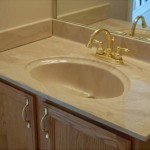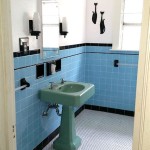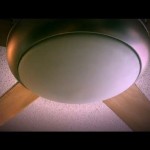Bathroom Vanity Design Ideas: A Visual Guide
The bathroom vanity serves as a focal point within any bathroom, contributing significantly to both its aesthetics and functionality. Selecting the right vanity requires careful consideration of space constraints, storage needs, and overall design preferences. This article explores a variety of bathroom vanity design ideas, accompanied by visual examples to inspire informed decision-making.
The diverse range of vanity styles available caters to various bathroom sizes, layouts, and design themes. From minimalist floating vanities to elaborate double vanities, the options allow for customization and personalization to create a bathroom that is both visually appealing and conducive to daily routines. Exploring these ideas helps homeowners and designers identify solutions that seamlessly integrate into their existing or planned spaces.
When selecting a bathroom vanity, considering the existing plumbing is as important as the design itself. Repositioning plumbing can add to the overall cost and complexity of the bathroom renovation project. It is essential to ensure that the new vanity aligns with the existing plumbing or plan accordingly, potentially involving a professional plumber to ensure correct installation and avoid future issues.
Maximizing Space Potential with Floating Vanities
Floating vanities, also known as wall-mounted vanities, offer a sleek and modern aesthetic while maximizing floor space. This design creates the illusion of a larger bathroom, making it especially suitable for smaller bathrooms or powder rooms. The open space beneath the vanity allows for easy cleaning and can accommodate items like baskets for additional storage. The clean lines and minimalist design often associated with floating vanities contribute to a contemporary and uncluttered bathroom environment.
The installation of a floating vanity requires careful attention to wall support. It is crucial to ensure that the wall is strong enough to bear the weight of the vanity and its contents. Securing the vanity to wall studs is essential for stability and safety. In some cases, additional support structures may be necessary, particularly for heavier vanities or when the wall is not sufficiently reinforced.
The plumbing for a floating vanity is typically concealed within the wall, further enhancing the clean and minimalist look. This requires precise planning during installation to ensure that the pipes are properly positioned and easily accessible for future maintenance. It may be necessary to adjust the existing plumbing to accommodate the floating vanity design. Consideration should be given to the accessibility of shut-off valves for the water supply.
Consider the height of the floating vanity when planning your installation. A standard height sits between 34 and 36 inches, mirroring typical counter heights. However, your height and the height of other household members should also be considered. A higher vanity can benefit taller individuals, while a lower one may be more practical for children.
Embracing Traditional Elegance with Freestanding Vanities
Freestanding vanities offer a classic and timeless appeal, often featuring intricate detailing and ornate hardware. These vanities provide ample storage space and can serve as a statement piece within the bathroom. Freestanding vanities are available in a variety of styles, from antique-inspired designs to more contemporary interpretations of traditional aesthetics.
The selection of materials for a freestanding vanity is crucial to its overall aesthetic and durability. Wood is a popular choice, offering warmth and natural beauty. Different types of wood, such as oak, maple, and cherry, provide varying grains and tones that can complement different bathroom styles. Stone countertops, such as granite or marble, add a touch of luxury and sophistication. The construction of the vanity is also important. Solid wood construction is a mark of quality and will generally outlast composite materials.
Freestanding vanities provide more flexibility in terms of plumbing placement compared to wall-mounted vanities. While the plumbing still needs to be connected to the water supply and drain, the vanity itself does not rely on the wall for support, allowing for easier adjustments and modifications. However, it is still important to carefully plan the plumbing connections to ensure a seamless and functional installation.
Choose a freestanding vanity that fits the overall dimensions of your bathroom. While they can be focal points, they can also overwhelm and reduce the movement space within smaller bathrooms. Measure the available space and allow for clearance around the vanity to ensure comfortable navigation. Take into account the placement of doors, windows, and other fixtures to optimize the bathroom layout.
The Functionality of Double Vanities
Double vanities provide ample counter space and storage for multiple users, making them an ideal solution for shared bathrooms. This design eliminates the need to share a single sink and countertop, reducing morning congestion and enhancing overall convenience. Double vanities are available in a variety of styles, from modern and minimalist to traditional and ornate, allowing for seamless integration into any bathroom design.
In order to accommodate a double vanity setup, the bathroom must be of sufficient size. A minimum width of 60 inches is typically required to comfortably accommodate two sinks and adequate counter space. The layout of the bathroom should also be considered, ensuring that there is enough room for movement around the vanity and other fixtures. It is essential to carefully measure the available space and plan the layout accordingly.
Installing a double vanity requires modifications to the plumbing to accommodate the second sink. This typically involves adding a second set of water supply lines and drainpipes. This requires careful planning and professional installation to ensure proper functionality and prevent leaks. It is also important to consider the placement of the water shut-off valves for each sink.
Double vanities add considerable storage space. Between drawers, cabinets, and countertop space, there is plenty of room for two occupants to store their personal items. Consider your individual storage needs and select a design that provides the necessary storage capacity. Think about the types of items you will be storing and choose drawers and shelves accordingly. Including features such as built-in organizers can further enhance the functionality of the storage space.
Exploring Unique Vanity Materials and Finishes
Beyond the basic design, the choice of materials and finishes can significantly impact the overall aesthetic of the bathroom vanity. Exploring unconventional materials and finishes allows for creating a unique and personalized space. From reclaimed wood to concrete countertops, the possibilities are endless.
Reclaimed wood vanities offer a rustic and eco-friendly aesthetic, adding warmth and character to the bathroom. The unique grain patterns and imperfections of reclaimed wood create a one-of-a-kind look that cannot be replicated with new materials. Reclaimed wood should be properly treated to ensure its durability and resistance to moisture. A sealant or varnish is often applied to protect the wood from water damage.
Concrete countertops provide a modern and industrial aesthetic, offering a durable and versatile surface. Concrete can be cast in various shapes and sizes, allowing for customization to fit specific design needs. Concrete countertops can be stained or sealed to achieve different colors and textures. While concrete is durable, it is important to seal it properly to prevent staining and water damage.
Metal finishes, such as brushed nickel, oil-rubbed bronze, and matte black, can add a touch of sophistication and modernity to the bathroom vanity. The choice of metal finish should complement the other fixtures and hardware in the bathroom. Brushed nickel offers a clean and contemporary look, while oil-rubbed bronze provides a more traditional and warm aesthetic. Matte black is a popular choice for modern bathrooms, adding a touch of drama and sophistication.
When selecting materials and finishes, consider the overall maintenance requirements. Some materials, such as natural stone, may require regular sealing and cleaning to maintain their beauty and prevent damage. Other materials, such as laminate, are more resistant to stains and scratches and require less maintenance. Choose materials and finishes that are both aesthetically pleasing and practical for your lifestyle.
Illuminating the Vanity Area
Proper lighting is paramount to the functionality and aesthetics of the bathroom vanity area. Strategically placed lighting enhances visibility for grooming tasks and contributes to the overall ambiance of the bathroom. Numerous lighting options are available, each offering a different aesthetic and functionality.
Sconces mounted on either side of the mirror provide balanced and flattering illumination for grooming tasks. Sconces should be positioned at eye level to minimize shadows and create a well-lit reflection. Choose sconces that provide adequate brightness and a color temperature that complements your skin tone. Dimmable sconces allow for adjusting the light intensity to suit different needs and preferences.
Overhead lighting, such as recessed lights or a pendant light, provides general illumination for the vanity area. Recessed lights offer a clean and minimalist look, while pendant lights can serve as a decorative element. Ensure that the overhead lighting is positioned to avoid casting shadows on the mirror. A combination of overhead lighting and sconces provides the most balanced and functional lighting scheme.
Integrated mirror lighting offers a sleek and modern solution for illuminating the vanity area. LED strips are often embedded in the mirror, providing a diffused and even light. Integrated mirror lighting eliminates the need for sconces, creating a minimalist and uncluttered look. Choose a mirror with adjustable brightness and color temperature to customize the lighting to your preferences.
Natural light is the most desirable source of illumination for the vanity area. Positioning the vanity near a window allows for maximizing the benefits of natural light. However, it is important to consider privacy and glare when positioning the vanity near a window. Window treatments, such as blinds or shades, can be used to control the amount of natural light entering the bathroom.

Beautiful Bathroom Vanity Ideas Forbes Home

15 Small Bathroom Vanity Ideas That Rock Style And Storage

27 Bathroom Vanity Ideas
:max_bytes(150000):strip_icc()/258105_9352cff4942f41ca9a569fd19719f30cmv2-1dbb8e2d34e447f1a8ec34f831615b76-37ea3a19ffd34f79b043ef86535a3778.jpeg?strip=all)
26 Bathroom Vanity Ideas That Are Stylish And Functional

Double Vanity Bathroom Design Ideas Decorating Topics

Contemporary Bathroom Vanity Designs For Your Home Design Cafe

35 Marvellous Bathroom Vanity Ideas And Designs Renoguide N Renovation Inspiration

6 Modern Bathroom Vanity Design Ideas Lily Ann Cabinets

Chic Bathrooms With Floating Vanities Vanity Ideas

25 Single Sink Bathroom Vanity Design Ideas
Related Posts







